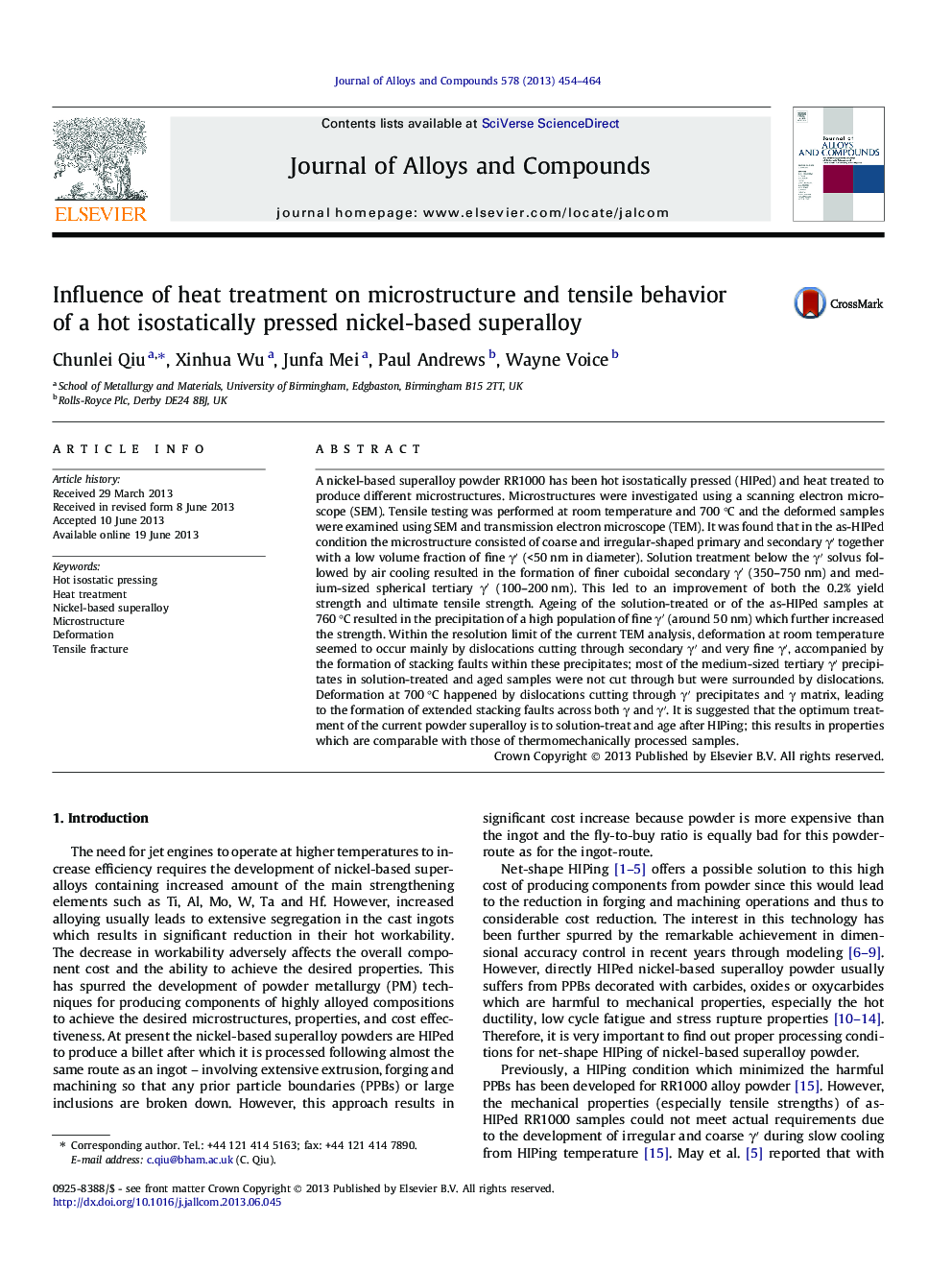| Article ID | Journal | Published Year | Pages | File Type |
|---|---|---|---|---|
| 1613713 | Journal of Alloys and Compounds | 2013 | 11 Pages |
Abstract
A nickel-based superalloy powder RR1000 has been hot isostatically pressed (HIPed) and heat treated to produce different microstructures. Microstructures were investigated using a scanning electron microscope (SEM). Tensile testing was performed at room temperature and 700 °C and the deformed samples were examined using SEM and transmission electron microscope (TEM). It was found that in the as-HIPed condition the microstructure consisted of coarse and irregular-shaped primary and secondary γⲠtogether with a low volume fraction of fine γⲠ(<50 nm in diameter). Solution treatment below the γⲠsolvus followed by air cooling resulted in the formation of finer cuboidal secondary γⲠ(350-750 nm) and medium-sized spherical tertiary γⲠ(100-200 nm). This led to an improvement of both the 0.2% yield strength and ultimate tensile strength. Ageing of the solution-treated or of the as-HIPed samples at 760 °C resulted in the precipitation of a high population of fine γⲠ(around 50 nm) which further increased the strength. Within the resolution limit of the current TEM analysis, deformation at room temperature seemed to occur mainly by dislocations cutting through secondary γⲠand very fine γâ², accompanied by the formation of stacking faults within these precipitates; most of the medium-sized tertiary γⲠprecipitates in solution-treated and aged samples were not cut through but were surrounded by dislocations. Deformation at 700 °C happened by dislocations cutting through γⲠprecipitates and γ matrix, leading to the formation of extended stacking faults across both γ and γâ². It is suggested that the optimum treatment of the current powder superalloy is to solution-treat and age after HIPing; this results in properties which are comparable with those of thermomechanically processed samples.
Keywords
Related Topics
Physical Sciences and Engineering
Materials Science
Metals and Alloys
Authors
Chunlei Qiu, Xinhua Wu, Junfa Mei, Paul Andrews, Wayne Voice,
